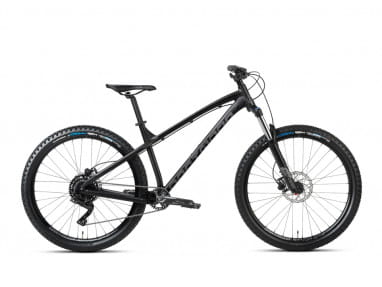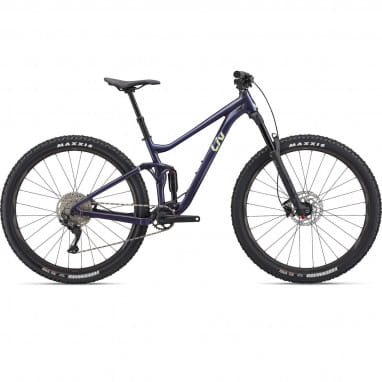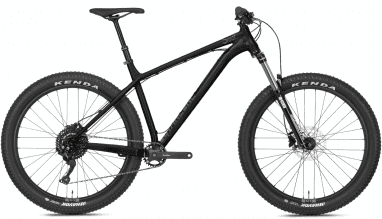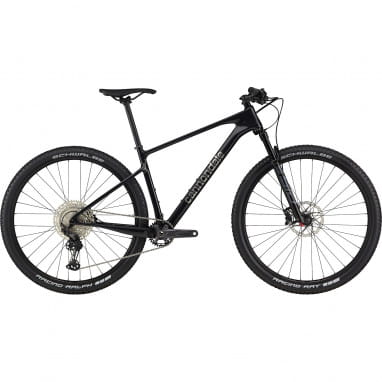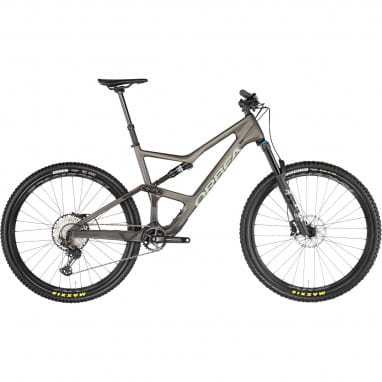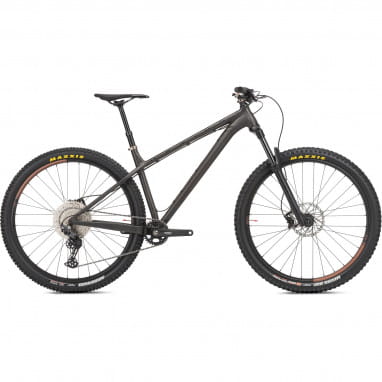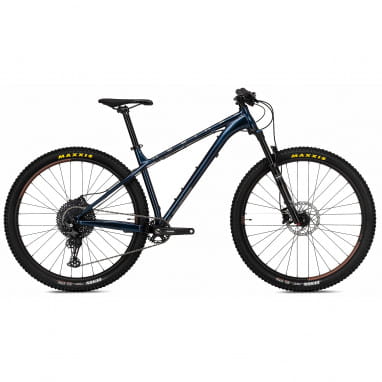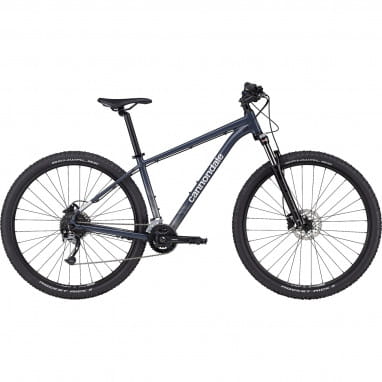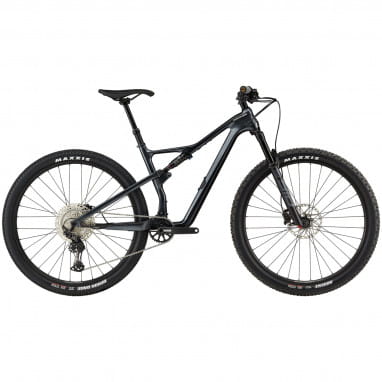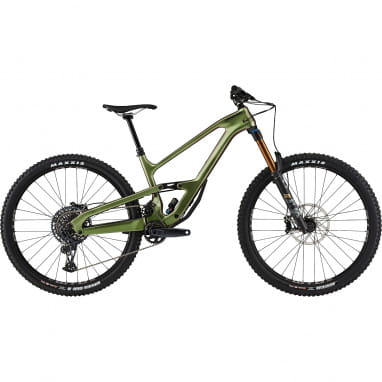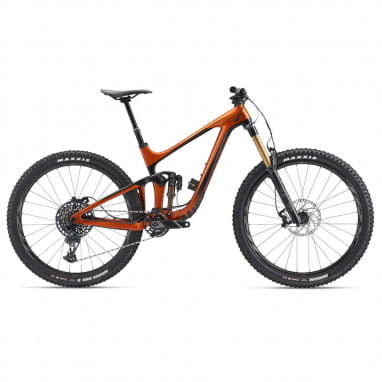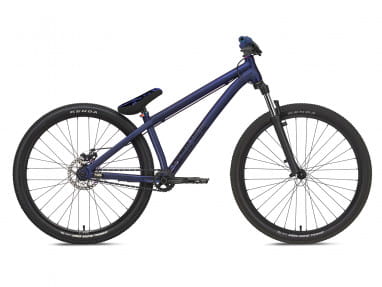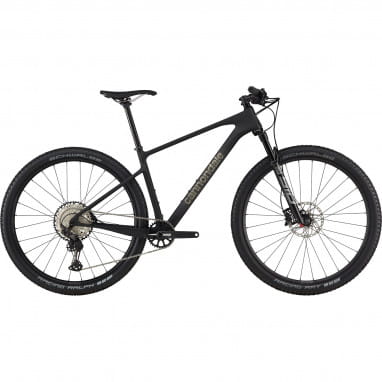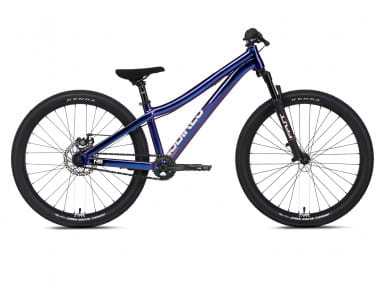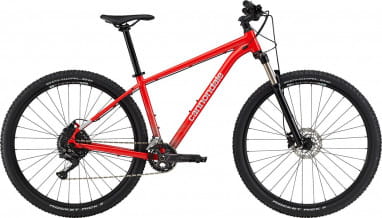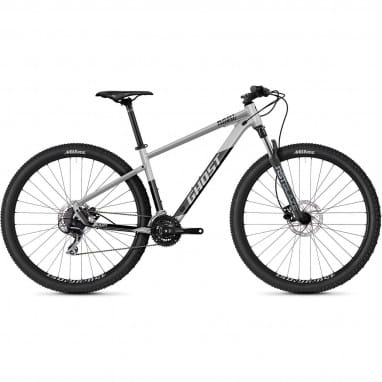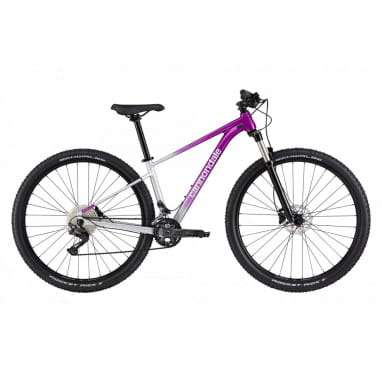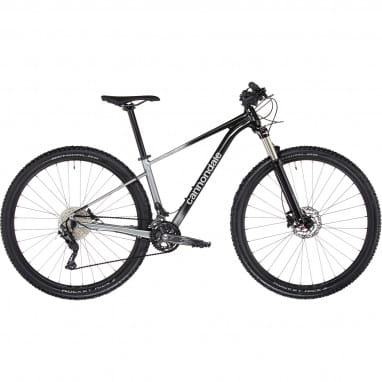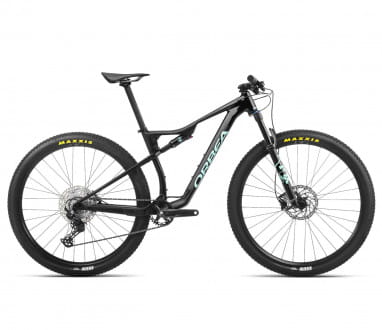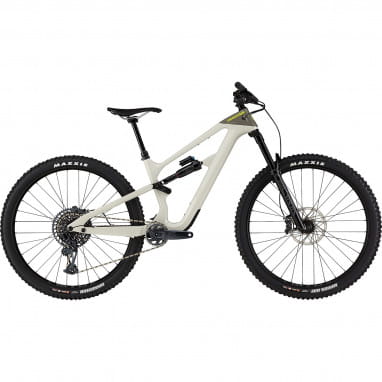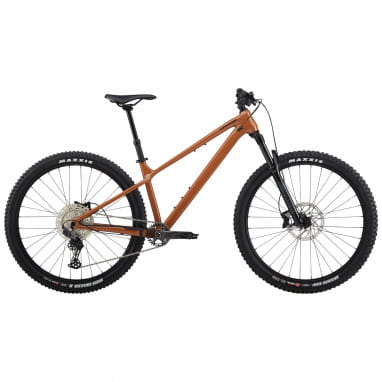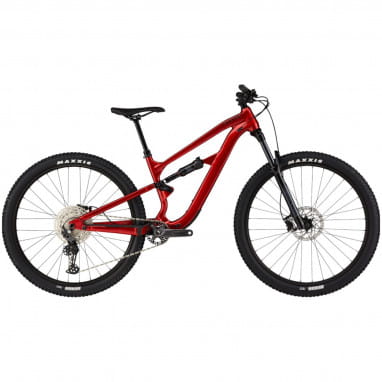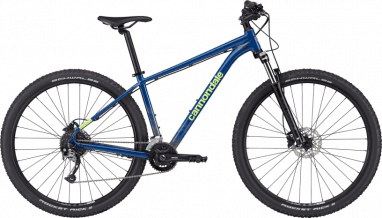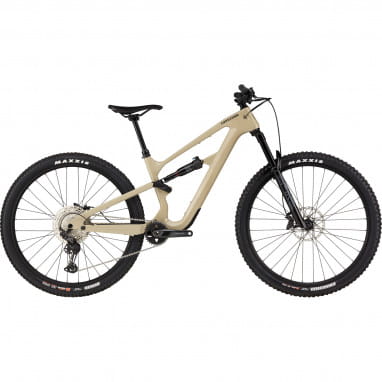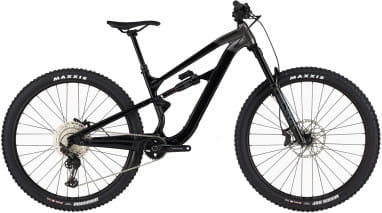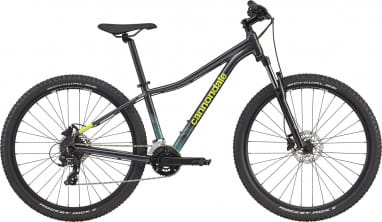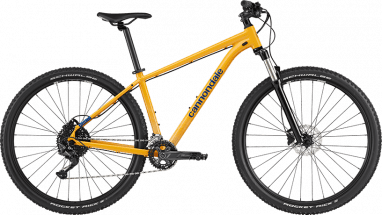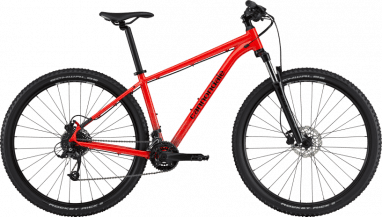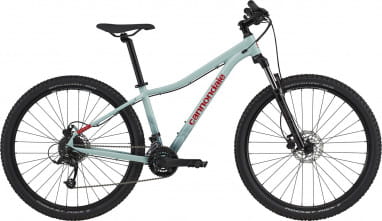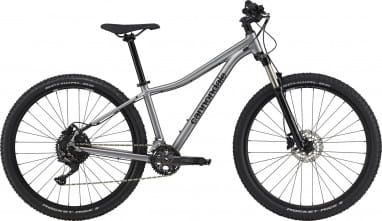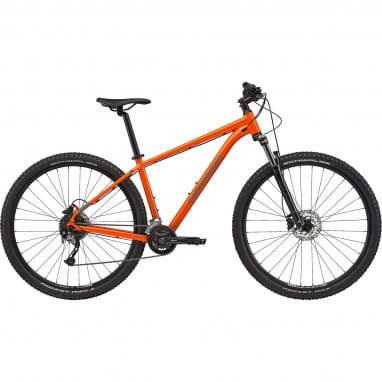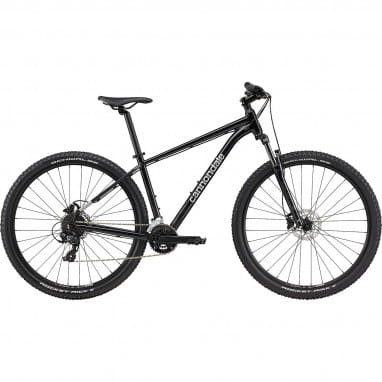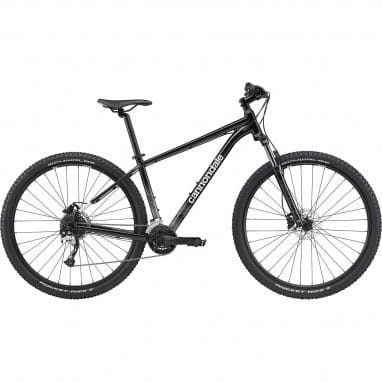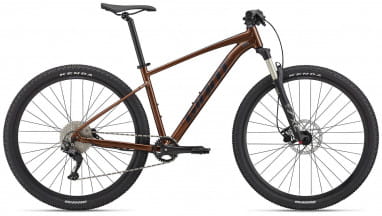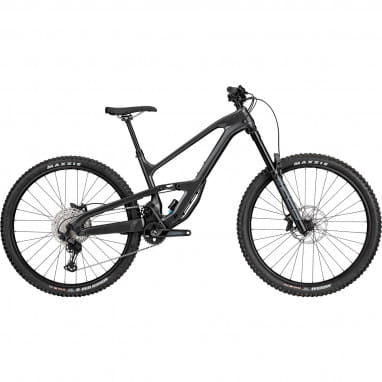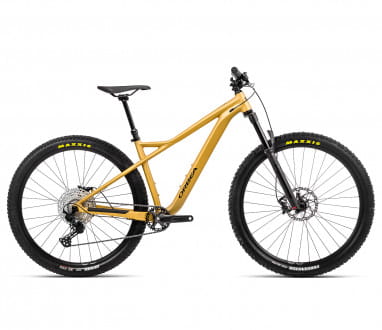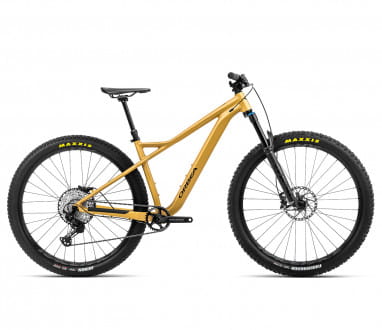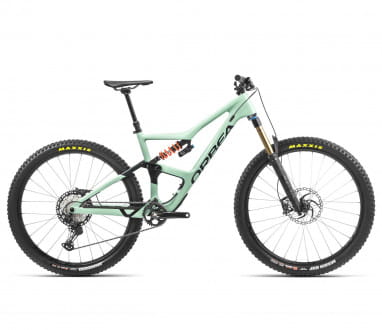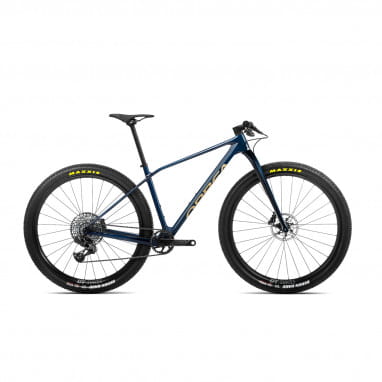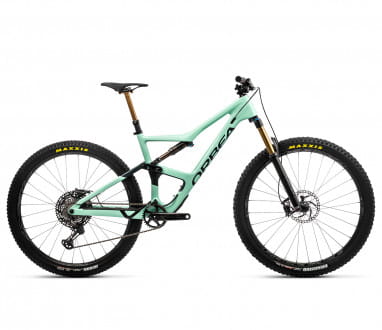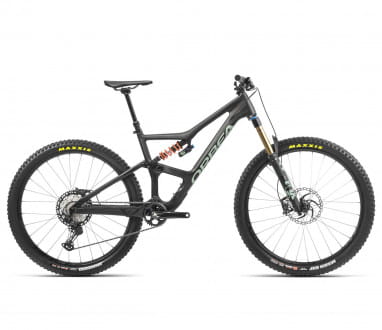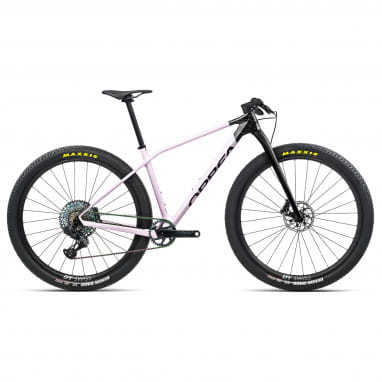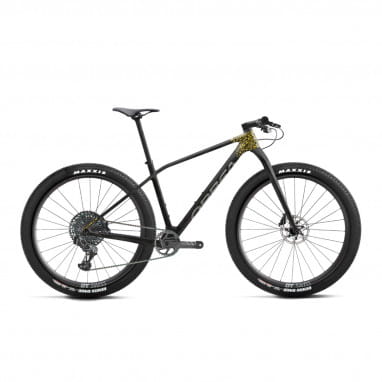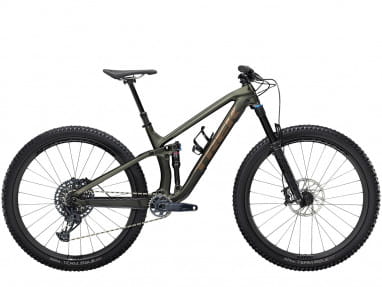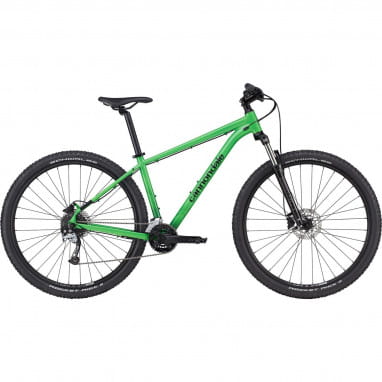Just picture this: there’s an amazing alpine panorama ahead and right there in the middle it's just you and your bike. It’s a cool morning, but you're sweating, because you've fought your way up to the top mostly standing on your pedals. After a short break to enjoy the view, you roll downhill. Turn after turn. The trail leads you over lush, green meadows, through an (almost) dry creek, and over roots in forest soil. You and your MTB form a perfect unit.
But wait, what is a mountain bike anyway?
For a long time, mountain bikes (or MTBs) were the most popular bikes out there. Lately, they’ve had to surrender their position at the top to gravel bikes, but for all eternity, mountain bikes will be able to claim that they took bikers off of the beaten track first, and then turned bikes from being just a means of transportation into a way of life.
There are a few manufacturers and tinkerers who claim to have invented the first mountain bike. Sometimes the fat tires are said to have done the trick, sometimes it was the suspension inside the fork, then again the frame shock was supposed to mark the birth of the off-road bike. In fact, it probably happened sometime in the 70s and somewhere in the USA.
In the beginning, cruiser bikes were „abused“ as downhill bikes. You can imagine it something like this: Someone is riding a bike that is totally not designed for that purpose down a steep slope. The adrenaline kick must have been great, but the bike was nothing but junk afterwards. Therefore, bit by bit, bikes have been adapted to meet off-road requirements.
Charles Kelly built the first "real" mountain bike in 1977, around the same time the first MTB races started, where a few crazy people shuttled down the steepest slopes possible. From then on, things went steeply uphill, or downhill, rather, for mountain bikes. Gradually they conquered new terrain, forests, mountains and more recently, bike parks.
Today, a MTB is a piece of high-end sports equipment. The bikes were optimized over and over again for comfort, safety or specific areas of use. That’s why you can buy downhill bikes, XC bikes, enduros, race bikes, freeride bikes or dirt bikes. What they have in common is that tarmac is not their favorite habitat. Whether you’re planning on buying a full-suspension bike or a hardtail, mountain biking is the discipline for true adventurers and action sports fans.
The quick way to the information you need:
This is a mountain bike - important facts you should know about full-suspension bikes and hardtails
A mountain bike doesn't necessarily need a steep slope to make sense. But it is at home on unpaved terrain. But since there's a large amount of offroad in the mountains, the name mountain bike just fits pretty well. You should also keep in mind, that MTBs come in many sub-categories. There are downhill bikes, enduros, crosscounty bikes (XC) or marathon bikes. Even dirt bikes can be counted as mountain bikes. Maybe it sounds strange, but there's even a special bike of for all purposes, it's called all-mountain (AM).
At a most basic level, mountain bikes are divided into fully-suspension bikes and hardtails.
Fully or Hardtail?
Almost every MTB has a suspension fork, a fork with some kind of cushioning inside. On the one hand, these dampers make sure that vibrations are not transferred from the front wheel to your arms and shoulders, they nicely smooth out rides over rough terrain. They also help you to stay on track. Without a suspension fork, the bike would slide sideways off of rocks or roots and wrestle the handlebars out of your hands. A suspension fork makes the bike roll straight ahead and over smaller obstacles. A hardtail mountainbike has a suspension fork, but a rigid frame.
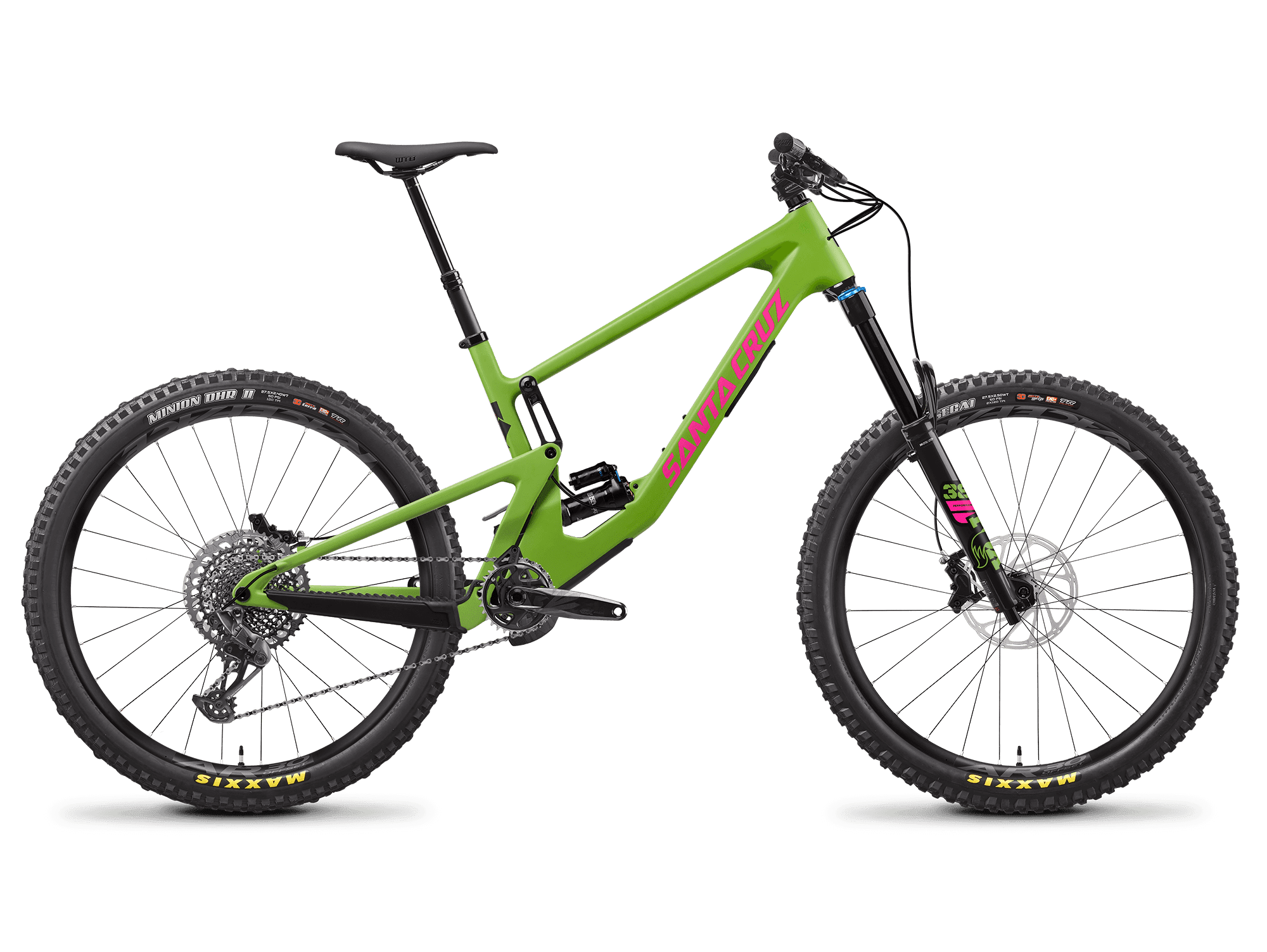
Apart from a suspended fork, a fully suspended mountainbike has a frame shock that lets you tackle all kinds of terrains. Picture © Santa Cruz
A full-suspension bike also has a frame shock. These shocks come in a variety of designs, they differ significantly in their function and price. The flexible frame lets you tackle really rough terrain without returning home with whiplash injury. Also, many tricks, jumps and drops are only possible with the flexibility offerd by frame shocks.
Those shocks, however, swallow some of the energy you spend on pedaling. That’s why a full-suspension bike in particular is not the best choice for long distances and cyclists who are in a hurry.
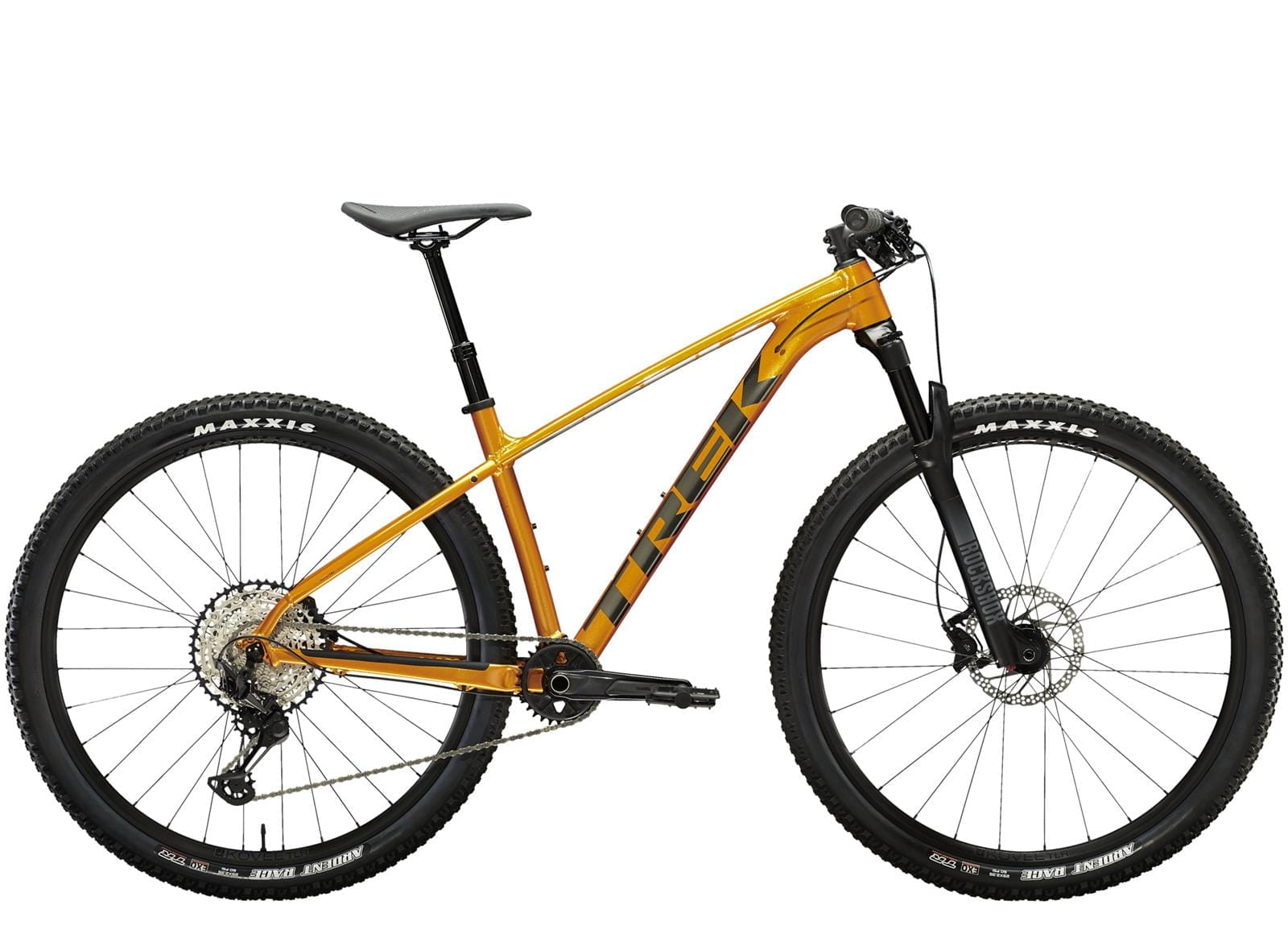
The rigid frame makes hardtail MTBs lightweight and efficient. Picture © Trek
|
MTB - Full-Suspension
|
MTB - Hardtail
|
- works in rough terrain and downhill
- tricks, jumps and drops are possible
- high riding kinematic
- perfect traction on loose surfaces
- lots of comfort on bumpy trails
- forgiving, therefore safe off-road riding
|
- the stiff frame is more efficient
- well suited for long distances
- cheaper
- lightweight
- needs no shock service
- suitable for everyday use
- for dirt and forest roads
|
|
- the shock swallows energy
- more expensive
- needs maintenance
- heavy
|
|
MTB tires
You always recognize mountain bike tires immediately, they are wide and have distinct thread patterns. Thanks to these tires, mountain bikes cling to any surface, whether it’s gravel, sand, grass or dirt. They easily go uphill and downhill. The tires also make mountain bikes weatherproof. Snow, rain or mud, mountain bike tires will get trough somehow.
The right choice of mountain bike tires is a longish process of trial and error, here you'll get only a little overview:
The right tire size is vigorously debated amongst mountain bikers. While one year 29ers are the thing to have, the next season will be dominated by 27.5-inch tires. Maybe everyone will even go back to 26-inchers, who knows? You can also choose a mixed setups or "mullet bike" with 27.5" at the rear and a 29" front wheel.
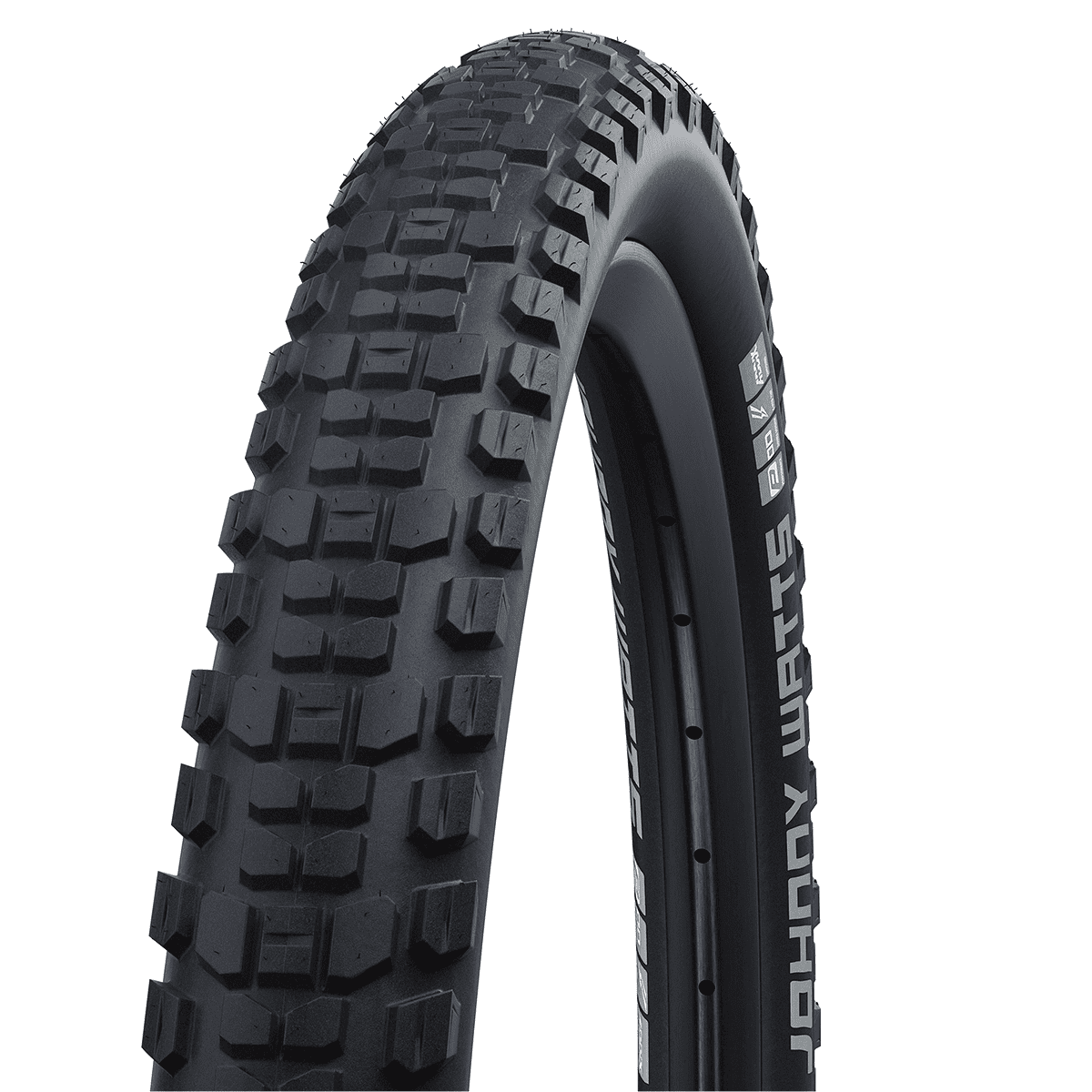
Wide tires with a lot of tread pattern are typically mounted on Mountainbikes, they give the rider good grip on loose surfaces and add some extra cushioning. Picture © Schwalbe
Smaller tires are easier to maneuver and more agile, while larger tires are more suitable for long distances. It is hard to predict which tire setup feels right for you. If you want to try different tire sizes, be sure to read the specifications carefully when you buy your bike. It'll tell you what tire sizes and widths a mountain bike frame is suitable for, and whether you can only fit one tire size or have a choice of wheels in different diameters and widths.
- The frame determines what wheel size (diameter) you can mount.
- Your rims and frame determine what tire width you can mount.
- Wider tires increase comfort and grip, but are less maneuverable. Slim tires ride efficiently and snappy, but offer less cushioning and puncture more easily.
- Many mountain bike tires come in sets of two, because there's a front tire and a rear tire that shouldn't be mixed up.
- More and more mountain bikes ride on tubeless tires, because they're lighter, less prone to punctures, they also roll with less rolling resistance.
If you want to buy new tires for your bike, you can check out our blog article "How to determine the right tire size" (in German) or visit our tires to find out how to choose the right tire size.
Mountainbike geometry: relaxed or athletic?
A mountain bike’s geometry obviously depends a lot on what you’ll do with it. With MTBs, tube length is a fluctuating currency. One year brings a little more reach (that's the horizontal distance from the bottom bracket to the handlebars), the next year might surprise us with more stack (that's the vertical distance from the bottom bracket to the handlebars). A little more head angle here, a little less seat angle there...
Not only top tube length and seat height are important parameters that influence the riding characteristics, the wheelbase and chain stay length determine how riding the bike „feels".
To make it short and simple: if you want to be fast and have longer distances ahead of you, a bike with a longer wheelbase is perfect. If you want to clown around on your bike and doing all the wild jumps is what you want, then a bike with a short wheelbase and short rear end is the best choice, as these bikes are more agile and nimble.
The geometry of a mountain bike puts you into very different riding positions, some more athletic and low, others more casual, relaxed and upright. Still you need to find a bike in the right frame size. To help you find the right frame size, we have a guide for you in our blog article "How to determine the right frame size for your bike" (in German).
Shocks and travel
Much like the tire size, suspension travel is an important and highly emotionally debated topic. Both, the shock inside the fork and the frame shock have a certain amount of travel (="room to give"). But is more travel always better? Or maybe not? Let’s see…
Suspension travel is the maximum distance the shock can compress in mm. The more travel your mountain bike has, the more off-road it can stomach. How much travel a bike needs depends on where it’s supposed to go. The possible range of suspension forks is from 100 to 120mm of travel on an XC bike to up to 230mm of travel on a freeride bike. The travel of frame shocks is similar.
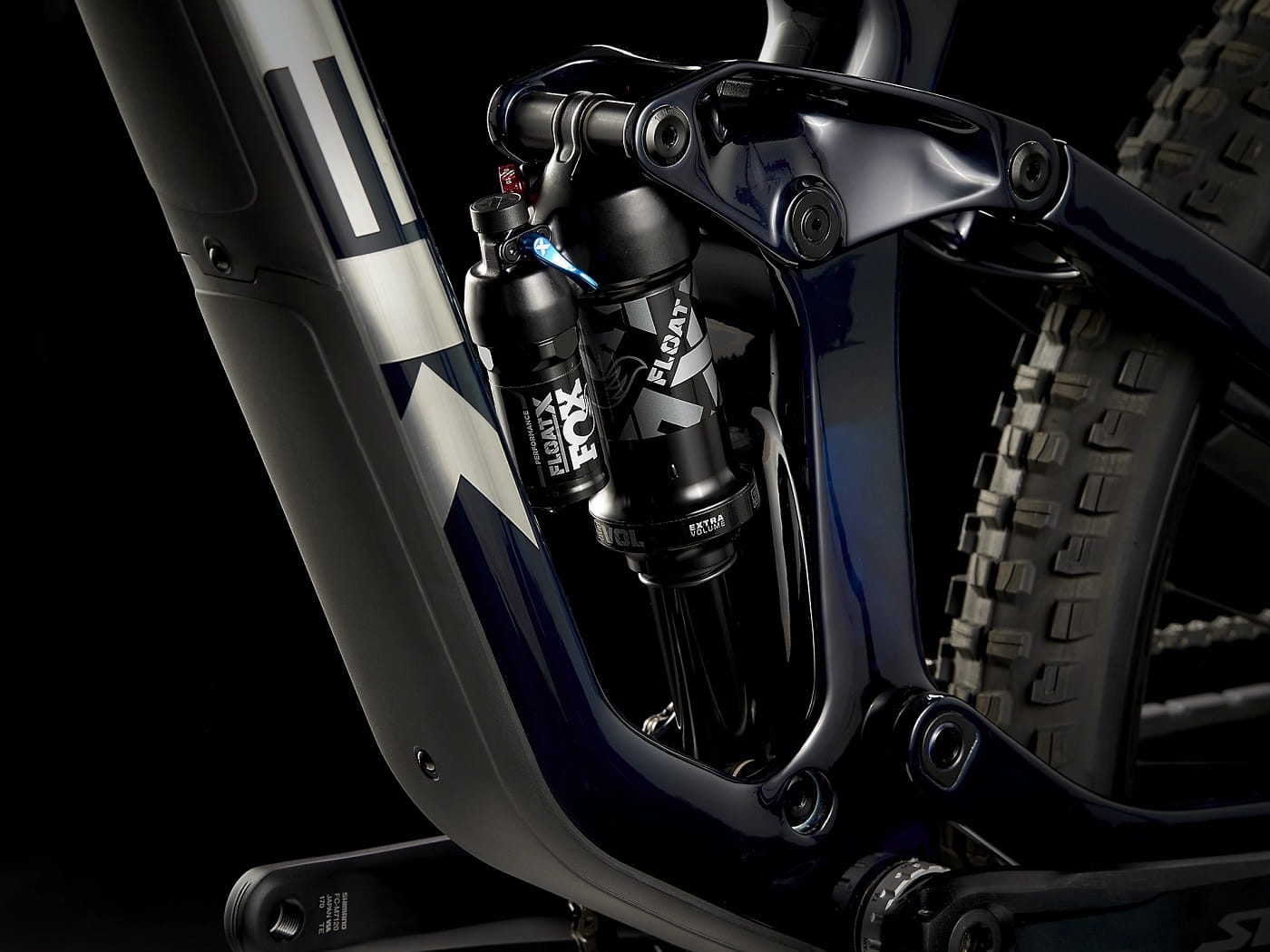
Some frame shocks have more travel than others; getting the setup right may take some trial and error. Picture © Trek
There are three different types of shocks. You can buy air shocks, with an an air cushion at work. Older and cheaper shocks have an elastomer damper that compresses and decompresses mechanically. Oil-pressure systems are mainly installed on expensive bikes with a lot of travel. On the outside of the shock a coil can add further bounce to your ride.
You should keep in mind though, that these suspensions don't only compress when they're needed. They give a little with every pedaling motion of yours. The big tires provide additional cushioning too. Very comfy, but on the other hand this means that a lot of energy disappears in a mountain bike’s dampers. Therefore, a full-suspension bike in particular is not really efficient. Lockouts help you out here, however. If you want to cycle large distances, a lockout blocks the shocks.
Why the wide handlebars?
Mountain bikes generally have a flat bar. And a really wide one at that. The wide handlebars give you great control over your bike when you’re going off-road. Don't ask about aerodynamics, though. Again, there's a simple rule of thumb: wide handlebars = good control, narrow handlebars = less wind resistance. Your flatbar should definitely have non-slip grips, because out there in the sticks you don't want to lose control of your mountain bike because of slippery handlebars, right?
Robust components mean more weight
Mountain bikes are not lightweight. Even if you treat yourself to a carbon frame, a mountain bike will weigh a few more pounds because MTB frames are built for durability. A suspension fork weighs more than a rigid fork. Thick, wide tires are heavier than skinny slicks. A frame shock and a dropper post weigh more than no frame shock and a regular seat-post. As you can see, all the equipment that makes a MTB a MTB adds weight. But on the bright side, mountain bike parts are robust and can handle wear and tear such as jumps or rough handling without breaking.
The dropper post - a typical piece of MTB equipment
Many mountain bikes come with a dropper post. A dropper post keeps the saddle firmly in place, but it can be lowered with a button from the handlebar. That way, the saddle isn't in your way when you're jumping or landing.
Mountain bikes for men, women and kids
More and more bike manufacturers don’t build bikes specifically for men and women anymore. There are different models with different geometries and bikes in many frame sizes, so you’ll certainly find a bike you feel comfortable on, whether you are a woman or a man. But of course you can still shop for a bike built for women or men’s bikes. Liv, for example, build bikes just for women.
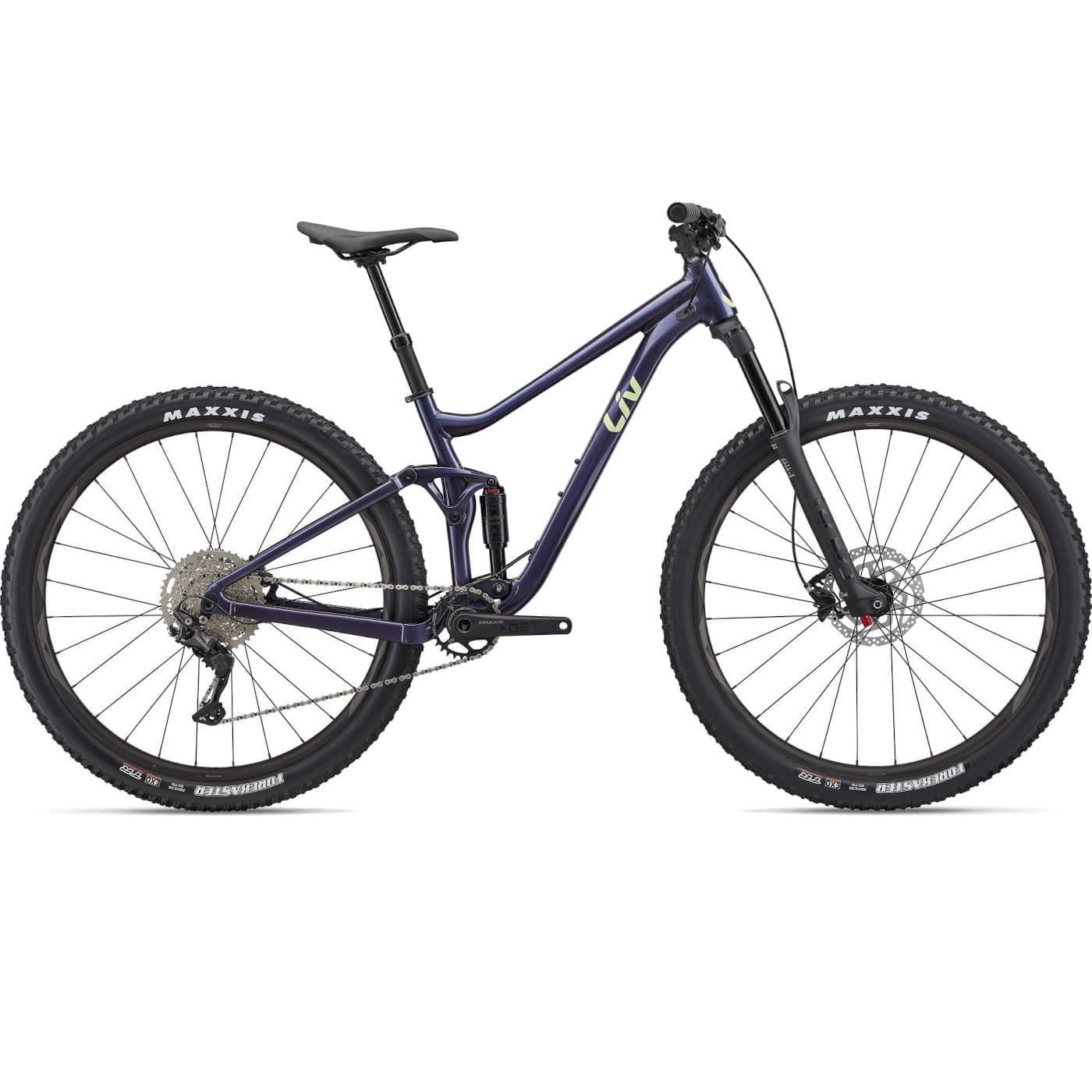
Some Mountainbikes are built exclusively for women. That makes them easier to handle and more comfy to ride for most women. Picture © Liv
Most childrens’ bikes for smaller kids are easy-entry allrounders. But starting with the 20-inch kids’ bikes we carry in this online shop, you'll find bikes that look very much like mountain bikes. Those bikes are perfect if your kids want to join you on easy trails.
1x shifts
For many years, a mountain bike without a large choice of gears was little more than a joke. Today, 1x-shifts are becoming more and more common on off-road bikes. Not only are they lighter, they're also cheaper and, most importantly, less complex in design and therefore less likely to fail you on off-road rides. They can cover (almost) the same ranges as mountain bikes with 2x or 3x shifts and more than 20 speeds. Here on BMO, you'll find mountain bikes with all kinds of shifters from well-known premium manufacturers such as Shimano or SRAM.
E-mountain bikes
There it a huge selection of new e-mountain bikes waiting for you. Manufacturers such as Bosch or Shimano have had special drives for mountain bikes in their portfolio for some time now. They are easy to operate, after all, you have to concentrate on the track ahead of you and don't want to worry about gears and support levels. In addition, these e-bike drives have enough power to easily master even the steepest of slopes, climb nicely and tackle difficult terrain. There are electric full-suspension bikes and e-hardtails. You can buy e-mountain bikes for almost all mountain bike disciplines, i.e. e-enduros, all-mountain e-bikes, e-downhill bikes or trail e-bikes. E-mountain bikes are also available in versions for women, as men's bikes or as unisex models.
If you just want to get some assistance only every now and then, a „light e-MTB“ might be a good choice. These bikes were first spotted around 2021, they have smaller drive units, that also weigh and cost a lot less.
All the gear for your mountain bike
As we all know, there are plenty of accessories available for cyclists. But for mountain bikers in particular, there is even morel equipment. Bike apparel for mountain bikers is usually quite casual. Behind the relaxed facade, however, you’ll find hard-wearing, functional garments that are not only breathable, but also comfy and tear-resistant. Biking pants and tops will last longer and protect your hide on your adventures in the great outdoors. There are, of course, mountain bike helmets, including many extra-safe full-face helmets. The crazier your mountain biking adventures tend to be, the thicker your layer of protection should be, buy appropriate body armor! If you're picking out a biking backpack for mountain biking, make sure it has no loops and loose buckles so you don't get caught by nature. And last but not least, mountain bike shoes that not only stick to the pedals but also offer good grip on the ground during bike-carrying passages are a real must!
Is a MTB the right bike for you?
There's no such thing as a mountain bike per se, so unfortunately we don't have an easy answer for you here. If you want to ride off-road, a MTB is your buddy. But there are different types of MTBs, that work best for different purposes. Depending on your riding style and the terrain, those bikes have to cover many different needs. If you like to go downhill over very rough terrain at top speeds, the bike needs as much suspension travel as possible. If your bike also has to climb steep hills because there's no lift at hand, you need a balanced frame geometry that provides ideal power transfer on long uphill sections. Or do you want a little bit of everything? Then you'd best shop for an all-mountain or an enduro bike. There are many options available!
An overview of the different types of MTBs:
Cross-Country (CC/XC), Race Bike
As you’ve probably already guessed, a cross-country bike or race bike is quick. It lets you cover a lot of distance even on more or less paved roads. Here you’ll find efficient hardtails without frame shocks and forks with less suspension travel. XC full-suspension race bikes are catering to the needs of professional racing, as the courses in the UCI World Cup are becoming more and more demanding for riders and material.
All-Mountain (AM) and Trail Bikes
All-mountain bikes are true allrounders, as these full-suspension MTBs have a wide range of uses. From an extended after-work round to crossing the Alps, just about everything is possible with these bikes. Unlike cross-country bikes, AM full-suspension bikes offer much more suspension travel and comfort in rough terrain. The geometry and components, such as a dropper seat-post, allow for both downhill rides and longer uphill climbs. Those bikes can be handled very well on difficult surfaces, trails and tracks.
Enduro Bikes
An enduro bike could be described as the big brother of an all-mountain bike, with a little more downhill thrown in. With much more suspension travel, enduros offer a lot more comfort and flatten out small and big bumps with ease. With between 150 mm and 180 mm of travel there are hardly any boundaries for an enduro. Visits to the bike park, racing, easy trail riding and even alpine trails, anything is possible with an enduro mountain bike.
Freeride Bikes
Freeriding is very close to the original idea of mountain biking. Freeride bikes come with frame suspension and usually have 170mm to 200mm of travel. They are at home in the bike park and on rough terrain with lots of airtime. But they are not build to cover large distances. The downhill-oriented frame geometry and lots of suspension travel make these bikes difficult to ride uphill, they’re better off in the lift. Long tours may also become pretty tough with that much suspension.
Downhill
Just like a freeride bike, a downhill bike impresses with an extremely effective suspension. The point of downhill contests is explained rather quickly: who gets down the mountain in the shortest time and one piece, wins. A good downhill bike wants a perfect balance of lots of suspension, agility, maneuverability and control.
Dirt Jump Bikes
A dirt bike goes up rather than forwards. As the name suggests, these bikes are all about jumping, performing breathtaking tricks it what they're built for. The bikes sport a low frame that offers enough freedom of movement, a suspension fork with 80 to 120 mm of travel and cockpits that allow the handlebars or the bike to spin 360 degrees. The comparatively small bikes are fun machines and unsuitable for covering distances. In addition, the bikes usually come with a single-speed drive and have only a rear brake.
Four-Cross / 4X
A 4X bike is the quick brother of the dirt jump bike. The frame design is closely related to dirt bikes, but here you get a gear shift, so you can generate enough speed in fast-paced races. In groups of four, the athletes shoot down race tracks, that takes them over numerous jumps and through sharp turns. Much like downhill bikes, 4X-bikes are designed for a perfect balance of weight, maneuverability, agility and suspension.
All in all, mountain bikes are performance bikes for off-road use with a huge range of models, types and uses. There are more and more e-mountain bikes, with drive units that deliver enough power for MTB action.
That’s a mountain bike:
- all-terrain ride with wide tires
- robust construction
- lots of suspension (suspension fork and frame shock)
- works offroad
- many different versions from race bikes to downhill bikes
- 1x shift, or 2x and 3x shift available, large range of gears
How does it feel to ride a mountain bike?
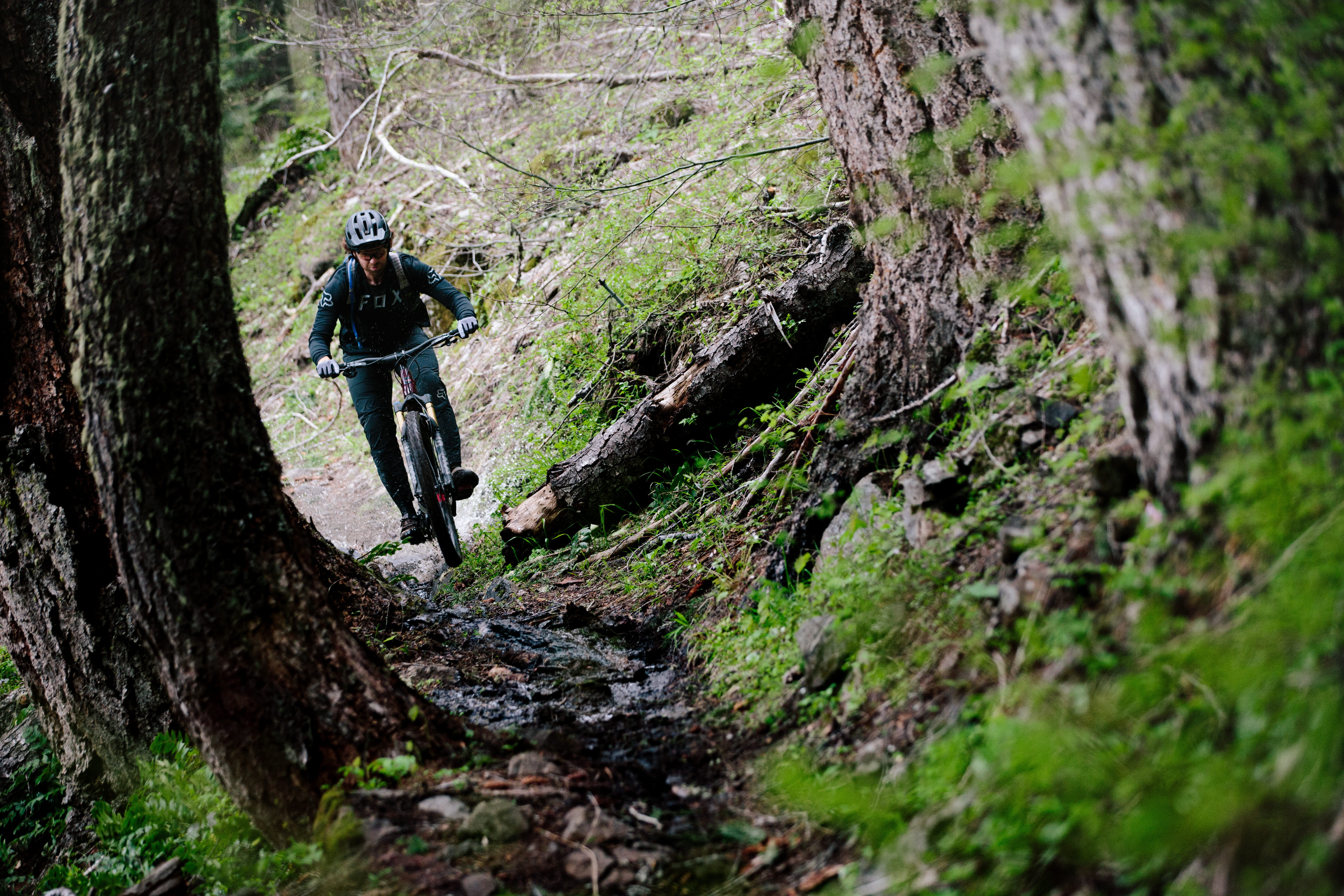
A mountainbike is at home where the roads go bad. How it feels to ride one is impossible to describe! You'll have to go out and try for yourself! Picture © Santa Cruz
The many different kinds of mountain bikes all come with a different riding experience and a different terrain that can be covered. Frame shape, shift, brakes, tires, and shocks make every MTB feel different. Generally, they are built for offload fun rather than huge distances. The downside of the suspension that makes your rides so nice and smooth, is that the shocks gulp energy. That does not mean that those bikes do not deliver a good performance. The performance is just not top-speed. It’s more „anytime-anywhere“. The shocks make sure that the wheels stay in contact to the ground at all times, this helps you tackle less-than-perfect surfaces and makes riders feel steady and safe.
You will not sit too low and stretched out on a mountain bike, since a balanced sitting position is vital to gain good control of your bike.
The frame material has a big impact on how a bike rides. Most mountain bikes are made of aluminum or carbon. Aluminum bike frames are lightweight and durable. They are also cheap to produce, so aluminum mountain bikes are cheaper to buy. Alloy frames are also very stiff, they offer little to no flexibility, but good efficiency. Carbon bikes are light as a feather, they offer excellent stiffness, but they are more expensive. Also, carbon frames are a little touchy. They don’t like punctual impact or falling over. That makes bike transport or attaching add-on parts a bit difficult.
The frame material of course influences the weight of the bike, the weight in turn has a direct impact on the bike’s handling. In general, lightweight bikes are not only easier to handle, they are also easier to control.
Carbon hardtails occasionally tip the scales at less than 10kg, usually they weigh between 10 and 12kg. Fullys are significantly heavier, here you have handle up to 15 kg. E-mountain bikes weigh in at around 20 kg, full-suspension e-bikes can weigh up to 25 kg.
If you're looking for a bike to cover long-distances with, you should head over to road bikes or touring bikes. A mountain bike's suspension usually comes at the expense of efficiency!
How it feels to ride a mountain bike:
- handling and riding depend on what kind of MTB you choose
- good suspension makes cycling comfortable but not too efficient
- smooth, agile, dynamic or playful
- a hardtail can be lightweight, full-suspension-bikes tend to be heavy
- perfect traction
- MTBs feel safe and stable
What are the advantages of a mountain bike?
Why should you ride to a mountain bike? Do you want more comfort on rough surfaces, try out flow trails or do you just want to kick ass downhill? In all these cases you've come to the right place.
Even if you don’t want to hit the trail or go downhill biking, a mountain bike has many advantages over a classic city bike or a road bike. The biggest plus is its suspension. A high-quality suspension fork can make a big difference in everyday riding comfort. On your daily commute to work over those downtown cobblestones or on a weekend trip on rural dirt roads, a MTB hardtail offers you a lot of riding comfort. Many cyclists also prefer the upright riding position - compared to a road bike or gravel bike. This riding posture is more relaxed and less stress for your back and neck. A hardtail is a good ride for commuting everyday or leisure biking.
The construction and components of a mountain bikes are usually robust and more hard-wearing than other bikes, that means less time in the workshop and more time on the road.
If you you want to do some real mountain biking, there’s no way around buying the bike that fits your plans. Riding in a bike park, on trails and heading downhill, definitely requires an enduro, a freeride or a downhill bike.
The advantages of a mountain bike:
- great comfort due to suspension
- works offload
- hardtails make great everyday bikes
- full-suspension bikes work best offroad
- robust, durable construction
- athletic, yet comfortable riding position
- a wide choice of different models for different riding styles
How much does a mountain bike cost?
You can spend a lot of money on mountain bikes, there's really no upper limit. You can, but you don't have to! The more you spend, the better and more durable the frame, components and wheels will be. Also, the range of use, and your radius increase with the price. A good bike simply can „do“ more, longer rides become more fun when your bike runs smoothly. Ok hardtails are available for about 1000 Euros, for a full-suspension bike you have to dig a little deeper into your pocket.
Hardtails:
- Simple hardtails are available from 800 to 1200 Euros. They are great for short bike tours, sporadic, everyday riding or light offroad rides. We also have cheaper hardtails in our online shop, they are perfect for those who rarely get on a bike or just want to just try out mountain biking. If you have no secure parking space for your bike, you should shop here, a lot of more expensive mountain bikes are stolen.
- Between 1200 to 2000 Euros you get a middle range hardtail. Here you can count on a mountain bike that survives terrain that is a little more demanding and will not immediately go to pieces.
- From 2000 Euros upwards you can buy a top-range hardtail. It will be hard-wearing, reliable and versatile. You get the best bike parts out there and can plan on many hours of comfortable, yet demanding biking.
Full-suspension bikes:
- You buy an entry-level full-suspension bike for 2000 Euros to 3000 Euros. Use a cheap fullys with caution, here the worst case includes parts flying all around after a relatively short time. However, if you just want to test whether a full-suspension bike fits your plans, a cheap bike is a good choice.
- The mid-range of full-suspension bikes start from 3000 to around 4000 Euros. You get better parts that not only work more smoothly but also last longer. Better brakes and gear shifts make riding those bikes not only more reliable, but considerably more fun.
- Top-range fullys from premium brands start from 4500 Euros, but you can spend a lot more if you want to. Excellent gear shifts, snappy disc brakes, smooth shocks with lockout, lots of set-up options and carbon frames on top – you'll find the cream of the crop in this price range.
As a general rule, as the price goes up, so does the performance of your bike. In the case of a mountain bike, that's not just the amount of time you'll have fun riding it and the durability of the frame and components, but also the surfaces and terrain you can ride. And the more you invest, the lighter your bike will be as well.
Price categories for mountain bikes:
Hardtails:
Full-suspension bikes:
Mountain bike, gravel bike, road bike, touring bike and cross bike –
where exactly is the difference between a mountain bike and other types of bikes?
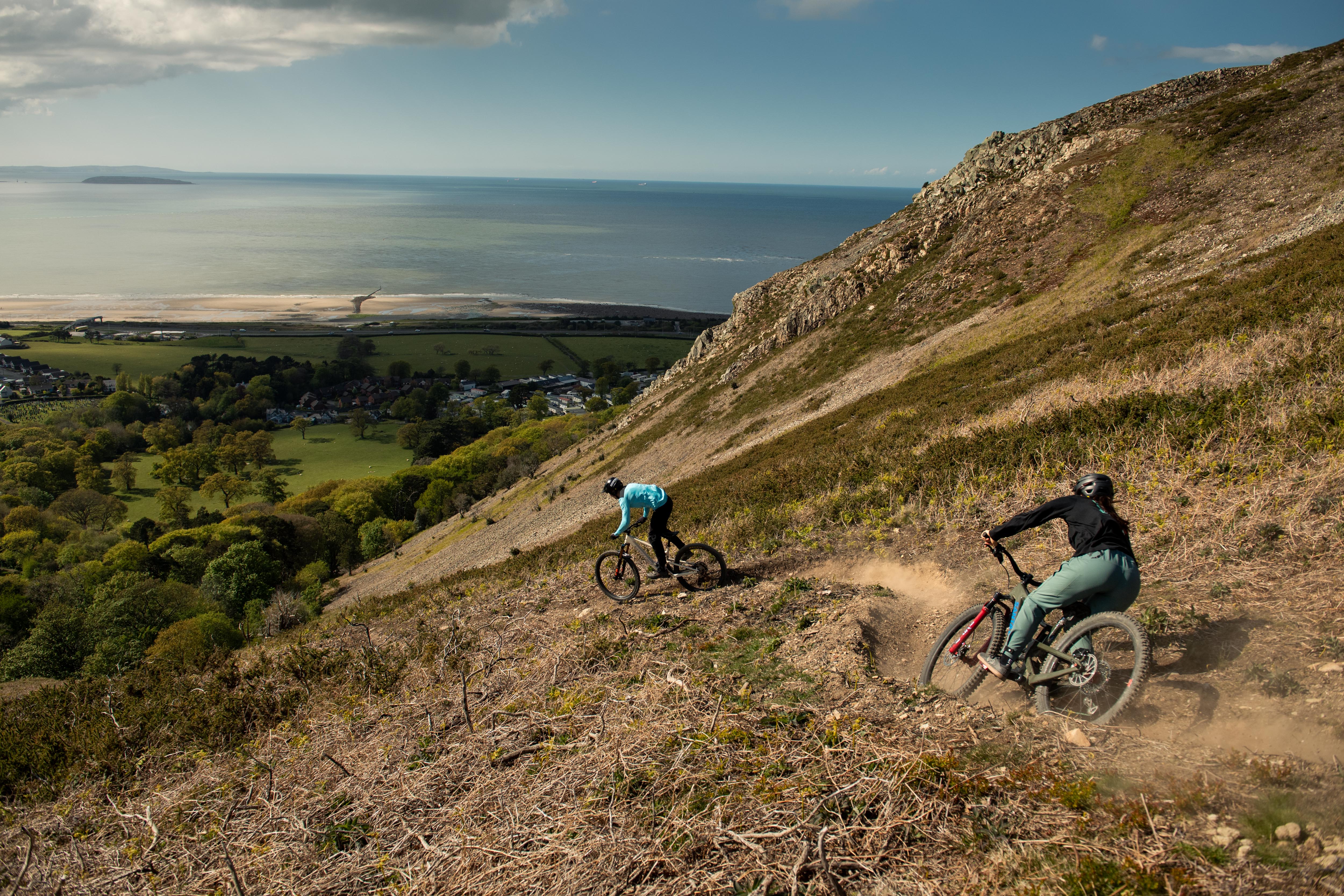
Here you can see what MTBs are best at - and what would be the end of any other bike! Picture © Santa Cruz
Mountain bike - gravel bike
The biggest difference between these two types of bikes is probably the suspension. Mountain bikes almost always have a suspension fork, and full-suspension bikes also have a frame shock. Gravel bikes do without, so your pedaling efforts are used more efficiently. Basically, both are capable of off-road riding.
Mountain bike - road bike
A road bike is fast, a mountain bike is everything but fast. Road bikes are light, slim, and often come looking as clean and tidy as bikes go. Mountain bikes are large, massive and boast with with every available bit of technology. Actually, a road bike is the exact opposite of a mountain bike.
Mountain bike - cross bike or fitness bike
The line between cross bikes and hardtails is blurred, both bikes are equally suitable for everyday use, light off-road and exercise rounds.
Mountain bike - touring bike
A touring bike is meant for comfort on long biking tours, and a hardtail could keep up. A full-suspension bike, on the other hand, simply swallows too much energy, it works short-distance and offroad.
Mountain bike - citybike
In the city, a city bike or urban bike is much more practical, it usually comes with everything you might need when you cycle every day and and it also meets the rules of the roads.
What should you look for when buying a mountain bike?
The selection of mountain bikes is gigantic, many models would like to be taken home by you. You can quickly find the right mountain bike after answering a few simple questions:
- How challenging is the terrain you want to ride?
Will you cycle on loose gravel, rocky trails, sand or through the mud? Or will you ride light trails and forest tracks? This question helps you decide whether to buy a full-suspension bike or a hardtail. The worse the surface, the more sense a full-suspension bike makes. If you want to go the full monty in the bike park, you should invest in a good quality bike. It will not end up in pieces and become a risk to your safety.
- How often do you want to ride your mountain bike?
For sporadic, short trips, an entry-level bike will do. If you're getting on your bike every now and then, mid-range bikes are perfect for you. If you go biking regularly and in difficult and technical terrain, you should treat yourself to a bike from the top price range.
Again, for short trips, a simpler bike will do. On multi-day tours, quality pays off, here you should invest in a good bike that you can ride comfortably. Generally, a good bike is much more fun on long trips because it offers more comfort and therefore less stress and pain. Also, a good quality bike is less likely to break down along the way.
- Where are you going to ride, how rough are the surfaces?
Mountain bikes are, of course, experts at rough terrain, but there are differences here too. You’re headed for the mountains, the bike park or a trail? Then you need a good, reliable full-suspension bike. You’ll be riding your mountain bike to work or want to go on easy bike tours? The terrain you're riding through has inclines, but the roads tend to be paved? Then a hardtail is right for you.
- E-mountain bike or mountain bike without „E“?
Whether you go mountain biking with or without an electric motor is a matter of taste, fitness and budget. In any case, there are a lot of e-mountain bikes out there, with more new models being released every year. You can just click over to the buying guide for e-bikes. You'll find a lot of information there to help you decide.
- What bike frame size do you need?
The size of a bike plays an important role not only in your riding comfort. When you are cycling off-road, you should have your bike under control at all times, and this only works if the frame size fits you. You can easily find the right frame size for you with the buyer’s guide in our blog (in German).
All things considered, a mountain bike is probably more of a toy than a means of transportation. However, it’s a toy that not only enjoys cult status, it also challenges you every time you head out there. There’s no other way to get adrenaline pumping, to explore the limits of what is possible and to defy gravity at the same time. Unlike other cyclists, mountain bikers are rarely individual athletes, by the way. There’s a whole bike community waiting for you. Get ready for the mountain biking lifestyle.
Buy a mountain bike from the best manufacturer!
We have mountain bikes made by Bombtrack, Giant, NS Bikes, Orbea or Octane One for you in our online shop. With these brands you can be sure to get a great performance and huge riding fun for your money. While you’re at it, why not buy all the accessories, bike parts and clothing you need right here on Bike Mailorder?
Don't know yet which bike you want to buy? Here on BMO it’s easy to compare different bikes. We explain all about mountain bikes, gravel bikes, urban bikes and city bikes, touring bikes, dirt bikes, road bikes, and E-bikes. We’re also glad to help you buy a cool kids’ bike for your child. Just read our buying guides, then you’ll know which bike you'll be happy with!
